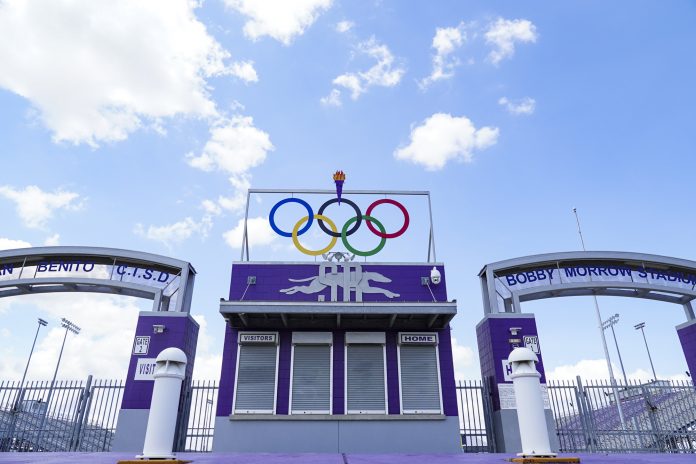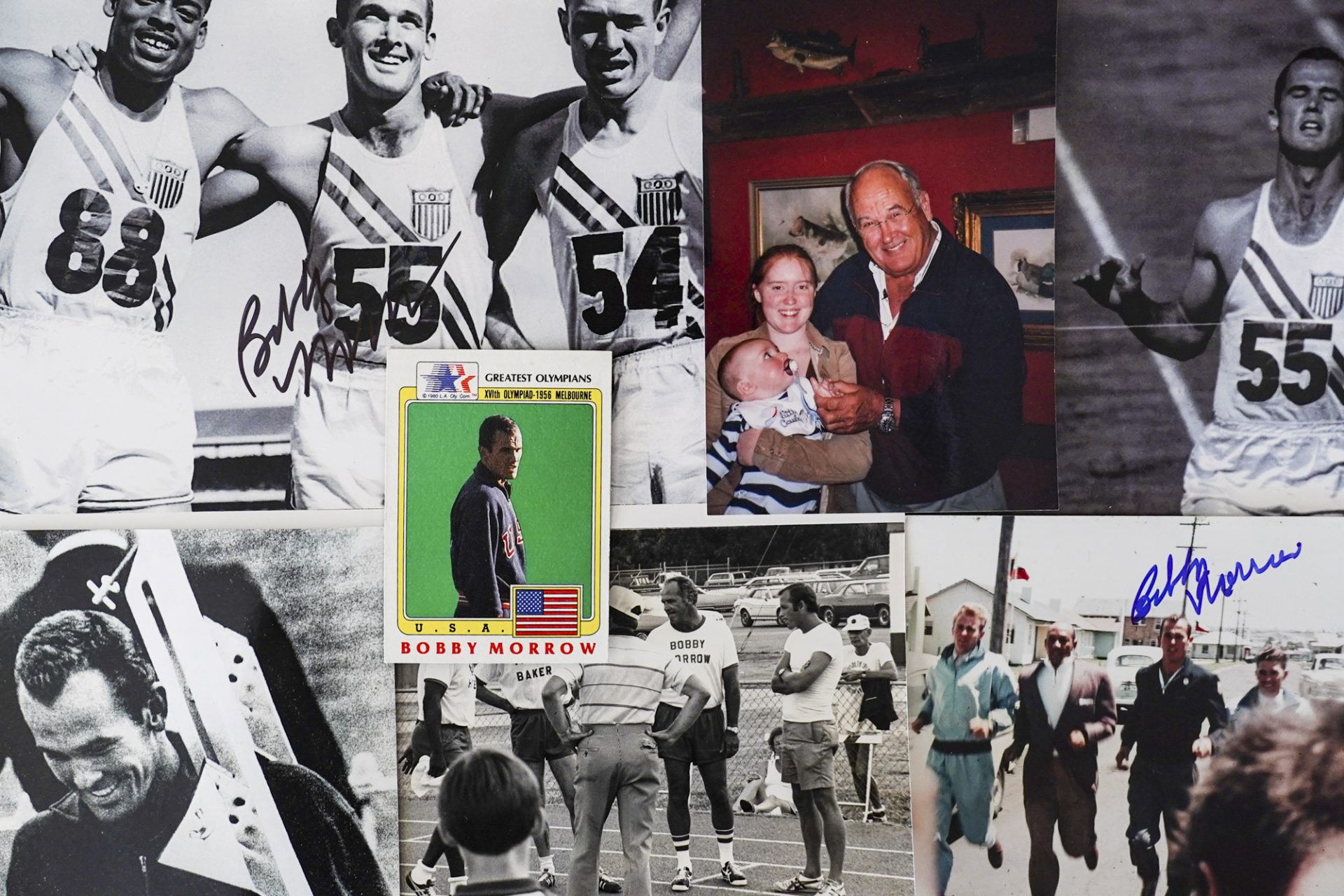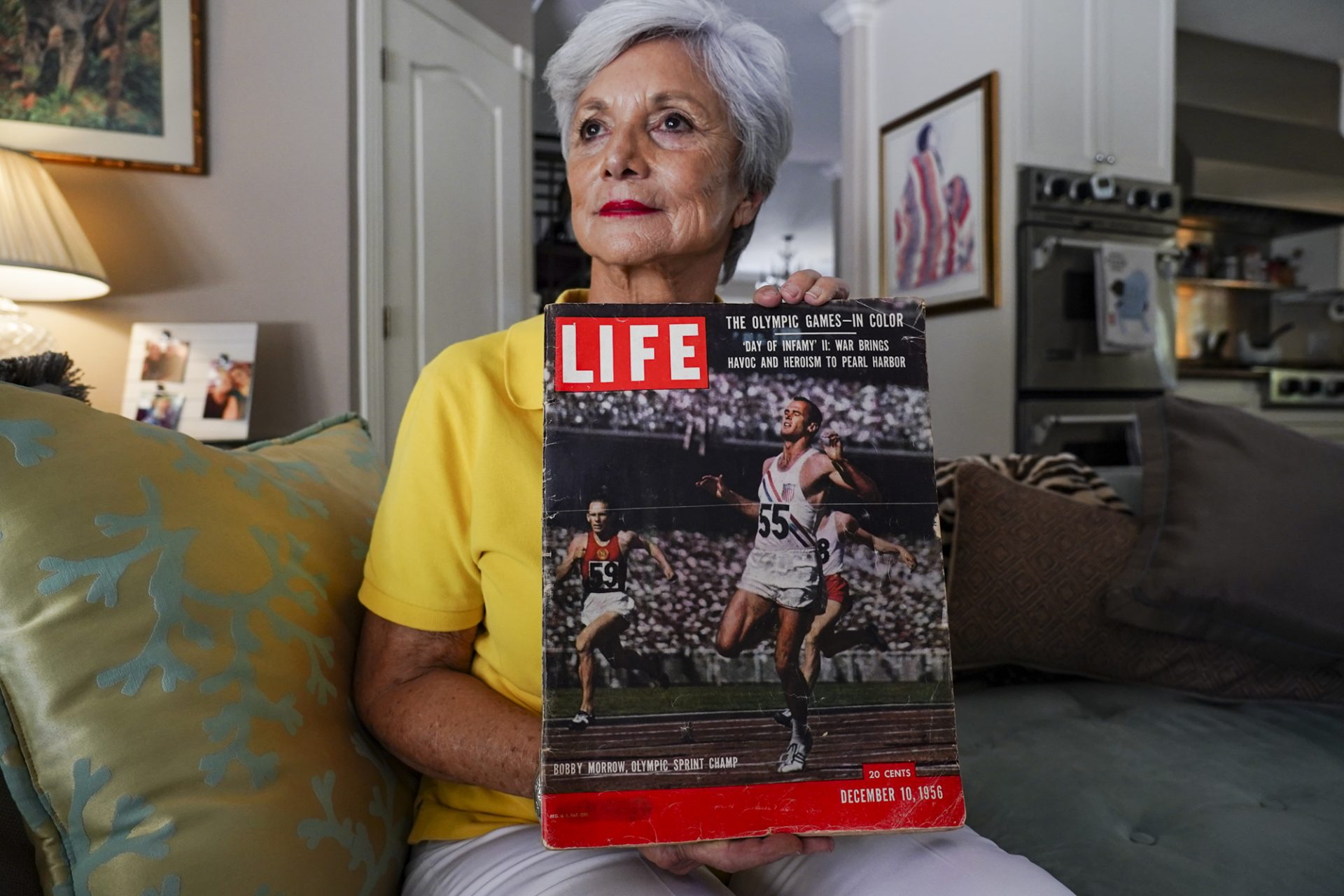
|
Only have a minute? Listen instead
Getting your Trinity Audio player ready...
|
SAN BENITO — Four years after Olympic legend Bobby Morrow’s death, a Texas Historical Marker will honor the stadium bearing the hometown hero’s name.
On Saturday, the San Benito Historical Society is set to hold a ceremony at 10 a.m., where officers are planning to place a Texas Historical Marker at the San Benito school district’s Bobby Morrow Stadium.
”The Historical Society wanted to honor Bobby Morrow, not only for his Olympic records, but because he lived his life as a role model for Christian values,” Sandra Tumberlinson, the society’s co-founder, said in a statement.
“When he died in 2020, kids heard about his sports achievements, but there was more to Bobby than sports,” she said. “We hope that this historical marker will help future generations read about Bobby Morrow and follow what he considered to be most important in life.”
On San Benito High School’s old dirt track, Morrow trained to become the man known as “the world’s fastest human.”
Two years later, he brought home three gold medals from the 1956 Olympics in Melbourne, Australia, hailed as “the greatest sprinter of all time.”
For six months, Tumberlinson researched Morrow’s life story to write her 64-page narrative supporting her request to the Texas Historical Commission for the historical marker.
“Bobby came from a farming family, ran on dirt tracks at the old stadium and won the hearts of America when he brought back three Olympic gold medals from the 1956 Olympics in Melbourne, Australia,” Tumberlinson wrote to the commission. “Bobby’s humble attitude, evident when he said, ‘Going to the state meet from our little high school in San Benito was something,’ stayed with him all his life. We are proud to honor Bobby with this state historical marker proclaiming his accomplishments and prouder still that he called San Benito home.”
At San Benito High School, Morrow entered the athletics program playing running back for Coach Jim Barnes’ Greyhound football team.

By early 1952, he was a sophomore when he joined the track and field squad.
Before afternoon practices, his father Bob Floyd Morrow would drive his tractor to school “to level and smooth out the dirt track,” Tumberlinson wrote.
In the school’s wood-working shop, Morrow built starting blocks to help brace his feet on the track.
As a sophomore under Coach Jake Watson, he qualified for the state competition.
A year later, Morrow was back at the big meet, winning the 100-yard dash.
During his senior year, he won the 100 along with 220-yard dash.
By the time he graduated in 1954, Morrow was a state champion, dominating the 100-yard dash.
After enrolling at Abilene Christian College, he went on to win 80 sprint championships.
Then in 1956, Morrow became the only San Benito High School athlete to compete in the Olympic Games, Leo Rodriguez, a local historian, stated.
In Melbourne, he became a legend, winning three gold medals, reigning over the 100-meter dash and the 200-meter sprint while leading his team to the gold metal in 4×100-meter relay.
Suddenly, Morrow was a superstar, featured on the covers of Life Magazine, Sports Illustrated and Sport Magazine, his big beaming smile splashing on cereal boxes.

In track, Morrow’s records were hard to beat.
“From 1956-58, Bobby Morrow won all the major sprinting titles for which he competed …, becoming the first man since fellow American Jesse Owens to do the sprint treble,” Tumberlinson wrote in her narrative. “He broke Owens’ Olympic record in the 200m before anchoring the USA to a new 4x100m record. Carl Lewis (1984) and Usain Bolt (2012 and 2016) are the only other men to win the three sprint titles at the same games. Not since Jesse Owens had a sprinter so dominated the Olympic track. Not until Carl Lewis and Usain Bolt would a man do so again.”
In 1989, Morrow was inducted into the National Track and Field Hall of Fame.
Then in 2016, he was instated into the Texas Track and Field Coaches Hall of Fame.
On Oct. 13, 2006, Morrow helped dedicate the $4 million, 12,000-seat football stadium bearing his name.



